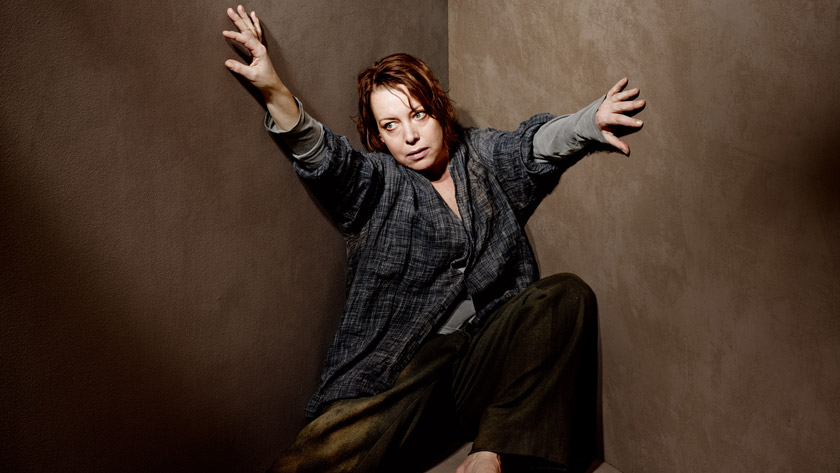
by Lidia Paulinska | May 21, 2016
April, Fathom events – On Saturday, April 30, 2016, I had the privilege and pleasure of viewing a screening of a live performance of Richard Strauss’s inexorable one-act opera Elektra,* the concluding operatic work in a year-long 10th anniversary celebration of “MET: LIVE in HD,” which had featured ten of the world’s greatest operas on giant cinema screens throughout the US.
The production premiered at the Aix-en-Provance Festival in France in 2013 and is considered to be a landmark contemporary staging of Strauss’s masterpiece. It was produced by the renowned Patrice Chereau who tragically died shortly after the opening at the age of 68. (A DVD is available of that production.)
The superb cast is headed by the smoldering intensity of soprano Nina Stemme in the title role whose Elektra is unremittingly consumed with a passion for vengeance upon her mother Klytamnestra, widow of Agamennon, performed masterfully by mezzo-soprano Waltraud Meier, and her lover, the cowardly Aegisth, convincingly portrayed by Burchard Ulrich, who have brutally murdered Elektra’s father Agamemnon. Bass-baritone Eric Owens gives a strong rendering of her sympathetic brother Orest and Adrianne Pieczonka rounds out this incomparable cast as her weakling sister Chrysothemis who plays a perfect counterpoint with her banal domestic aspirations to her possessed sister Elektra who has dedicated her life to revenging her father’s murder, She realizes her goal in the end, but at the expense of her sanity.
Staged in an ominously sparse gray space with costumes to match, Chereau’s smoldering rendering of Strauss’s masterpiece is a production for the ages and opera at it’s best!
* * * Significantly, Sigmund Freud used Sophocles’ Elektra in his analysis of a daughter’s attachment to her father, and Oedipus Rex as the basis for his theory of a son’s attraction to his mother. The so-called “Oedipus” and “Elektra” complexes continue to be very much a part of Freudian psychoanalysis.
by Lidia Paulinska and Hugh McMahon
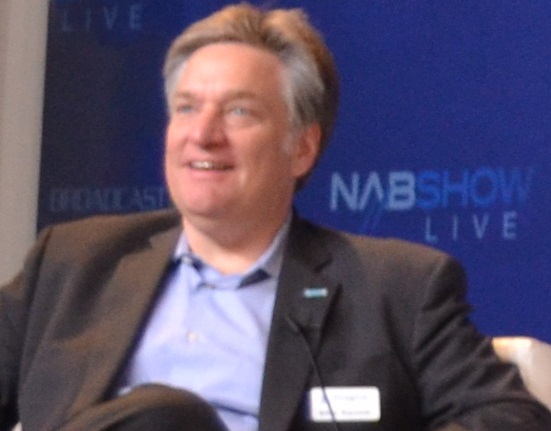
by Lidia Paulinska | May 21, 2016
April, NAB – Two years ago when we started to talk about IP and a question was – Can we do it? A year ago we were asking – Should we do it? This year a question is – How we do it? Steve Reynolds from Imagine Communications was describing the inception of AIMS, Alliance for IP Media Solutions, during our 1:1 interview. Reynolds added that in 2015 a lot of customers came to Imagine Communication with the concerns that they want to do IP but they were worried that is going to be a fragmentation in that segment of the industry. That was clearly need for AIMS.
NAB 2016 was a first year for AIMS, an industry consortium led by broadcast engineers, technologists, visionaries, vendors and business executives dedicated to an open-standards approach that moves broadcast and media companies to a virtualized, IP-based environment.
Reynolds explained that AIMS does not develop specs and standards. AIMS is trade of mind, it is marketing organization – he stated. The goal was to group the companies that primarily are working on broadcast technologies to get together and agree on the common set on the standards we want to use. The standards that are already developed. AIMS focus is on educating, evangelizing and spreading the adoption the technologies, but not to develop specs and standards. We here to help the adoption – he added. When the company joins AIMS it signs the adopter agreement, which says that they will promote this use of technologies, the AIMS roadmap, as you prefer to IP production.
More information about AIMS can be found here: http://aimsalliance.org/
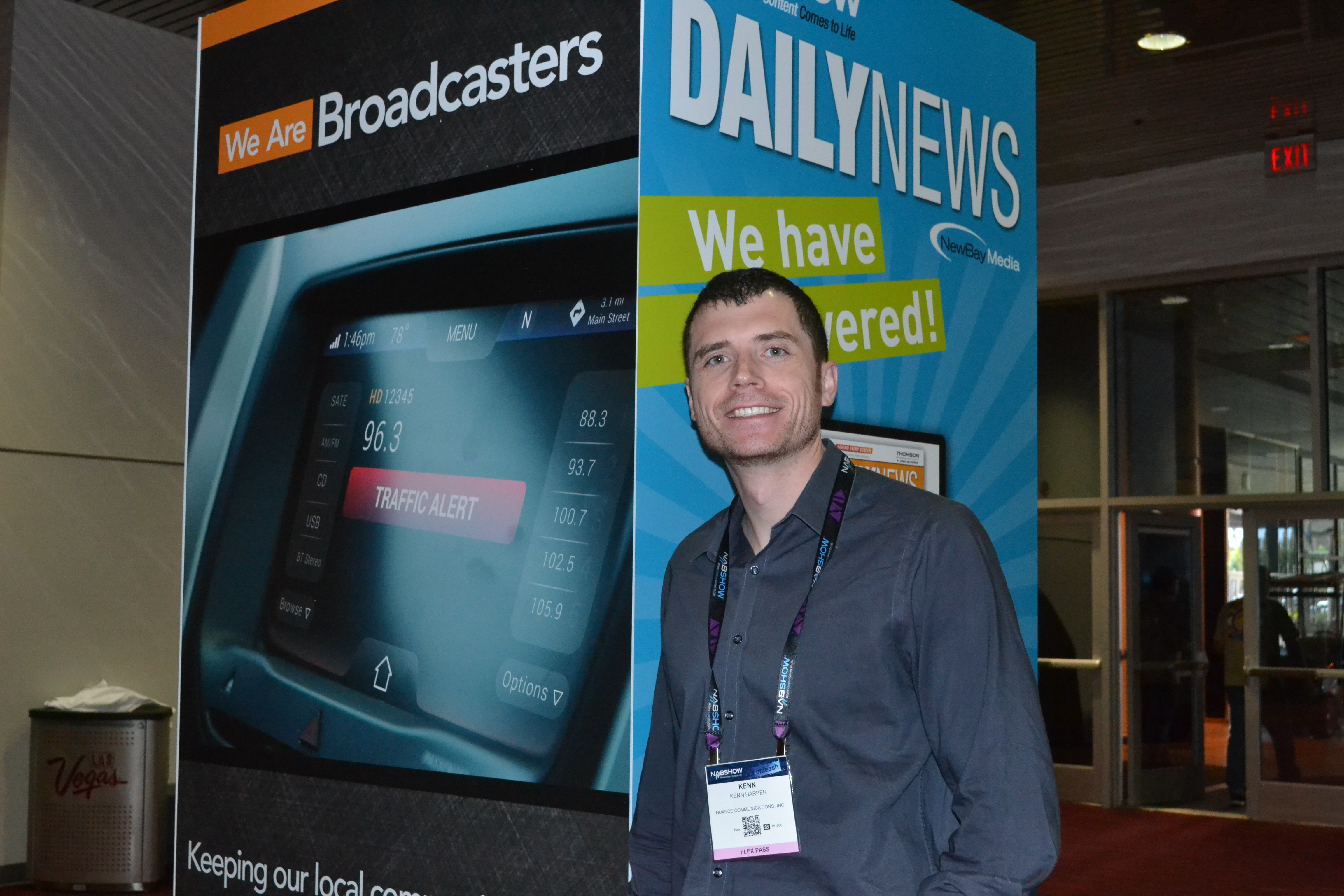
by Lidia Paulinska | May 11, 2016
April 2016, NAB – Voice and language which is the most natural modalities we acquired since birth. No wonder that we are searching for communication with devices using our voice and language. Nuance Communications, has developed products that provide speech and imaging applications, is a leader in this area. If a customer uses voice commands to talk to automobile there is 99% chances that it is Nuance technology.
Kenneth Harper, VP, Devices & Ecosystem of Nuance talked to us about last advancements in transforming the TV experience with voice. Nuance has been working for some time on specific solution called Dragon TV that is going to have huge impact on the TV experience.
The TV room is usually a complex multi-person environment where the commands are mixed with conversations making voice control is a big challenge. While you are watching TV, your kids are playing or your other devices are talking to you. There are some advancements to solve that problem – said Harper. One of them is called signal enhancement. Nuance is looking at audio that is being recorded, usually from two different microphones that, depending on set up, use an integrated technology and solution that we use that can sit in the remote control or set top box. The technology trys to determine who is actually speaking in the living room. When we determine who that speaker is, we put what we called “a beamer” on that speaker. Then as a post processing task from all audio that was recorded, we enhanced that audio and suppress everything else. It called signal enhancement.
Accuracy matter in TV experience and Nuance making it work well.
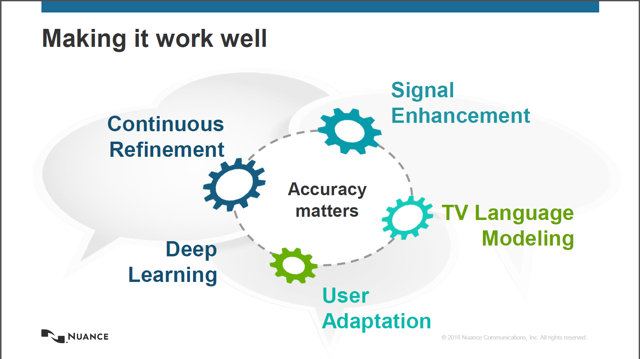
TV is not one piece but multiple pieces. Nuance covers the entire spectrum for TV by providing the enabling technology to manufacturers and then integrate it this with specific hardware devices or specific solution. Now when the second screens are considered as TV as well, a companion app is in use in that case. Sometimes it is at the set up box, sometimes inside the remote control. The customers have their preferences and Nuance follows their needs for both solutions– said Harper.
There is a difference between using TV and training Dragon for PC use to helping write an document or general input to a computer– mentioned Harper referring to our journalism work. TV uses mostly short comments that are fairly predictable. For TV there are certain things people going to do.
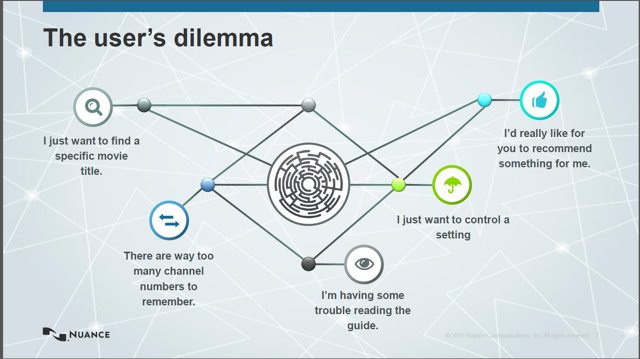
There are usually short commands, 5-6 unique words, we know the vernacular. Those are things that can be optimized – stated Harper. If a customer search for ‘movies with Bill Murray”. That’s how it all comes together.
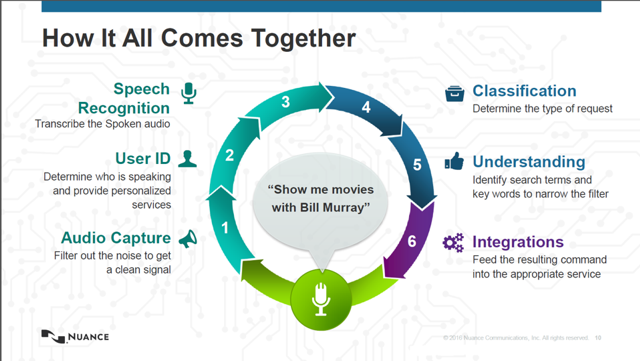
The future of the living room is set. TV becomes the central hub of the home and voice is becoming the primary interface.

by Lidia Paulinska | May 1, 2016
April, Fathom events – “Renoir” was presented in select HD digital cinemas nationwide by Fathom Events in cooperation with Seventh Art Productions, enjoying its third successful season in presenting Exhibition on Screen, a one-night film event held on Thursday, April 21, 2016. It is a story told in representative paintings of one of the most influential artists of all time and a principal contributor to the creation of the Impressionist movement (which he later rejected), Pierre-Auguste Renoir (1841-1919).
This compelling overview of Renoir’s masterful works focuses primarily on the Barnes Collection in Philadelphia which is home to more Renoir’s than any other gallery in the world. August Renoir was father of the celebrated French film director Jean Renoir, creator of such works as La Grande Illusion (1937) and The Rules of the Game (1939), often cited by critics as one of the greatest films ever made.
In April, 1874, August Renoir, accompanied by Monet, Sisley, Pissarro and several others displayed their works at the first Impressionist exhibition in Paris and from there, a prolific Renoir was to go on to create several thousand paintings during his lifetime, 181 of which are on display at the Barnes, representing the single largest collection of his works. One of the best known Impressionist works is Renoir’s 1876 Dance at the Moulin de la Galette, a painting depicting an open-air garden scene crowded with people dancing, a place close to where Renoir lived. Fellow artists who admired him included Picasso, Matisse and Claude Monet.
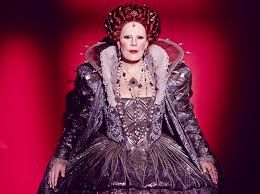
by Lidia Paulinska | Apr 29, 2016
April, Fathom events – On Saturday, April 16, 2016, Fathom Events presented Gaetano Donizetti’s del canto* masterpiece Roberto Devereux for a one-night only cinematic presentation in hundreds of theaters throughout the United States. The screening was part of the year-long celebration of the tenth anniversary of the Metropolitan Opera’s Peabody and Emmy award-winning series, “The Met: Live in HD.”
This magnificent program, which has included some of the greatest operas of all time, also features during intermissions, fascinating behind-the-scenes interviews with the Met’s illustrious stars, the supporting cast, crew, and production teams, giving us an “up close and personal” insider’s glimpse at what’s involved in staging these operas.
Roberto Devereux is the climatic opera of a Trilogy which also includes Anna Bolena and Maria Stuarda, all three having been staged by Sir David McVicar, and astonishingly, Soprano Sonar Radvanousky who magnificently portrays Elizabeth I in the third piece of the trilogy, completes a marathon at the Met, having sung all three of Donizetti’s daunting queens in a single season: Anne Boleyn, Mary Stuart, and Elizabeth I (Queen Elizabeth II coincidentally celebrated her 90th birthday April 21, the same week Roberto Devereux was presented.)
The Met has assembled an ideal cast for this outstanding production, featuring the superb tenor Matthew Polenzani who excels with lyrical elegance in the title role and Ms Radvanousky who sings with sharp-edged searing power perfectly portraying an aging, broken Queen tragically in love with Devereux, a manipulating nobleman 34 years her junior. The great Mezzo-soprano Elina Garanca brings her sumptuous voice to the role of Sara who is in love with Deverux, Earl of Essex, and baritone Mariusz Kwiecien in the role of her husband the Duke, singing with both virile power and soaring lyricism.
For an interesting balance, this reviewer highly recommends a 1998 film starring Cate Blanchette titled Elizabeth , and although obviously not an opera, it vividly portrays Elizabeth as she first ascends the throne of England and was nominated for several Academy Awards, winning one for make-up.
* Del Canto (“beautiful song”). According to The Harvard Dictionary of Music, del canto “denotes the Italian vocal technique of the 18th century with its emphasis on beauty of sound and brilliance of performance, rather than dramatic expression or Romantic emotion … it must be considered as a highly artistic technique and as the only proper one for Italian opera and for Mozart.” We might safely add Rossini and Handel to that statement.
Today, the term del canto seems to have fallen out of favor and tends to be viewed as vague and ambiguous and lacking any semblance of relevance in the 21st century.
by Lidia Paulinska and Hugh McMahon







